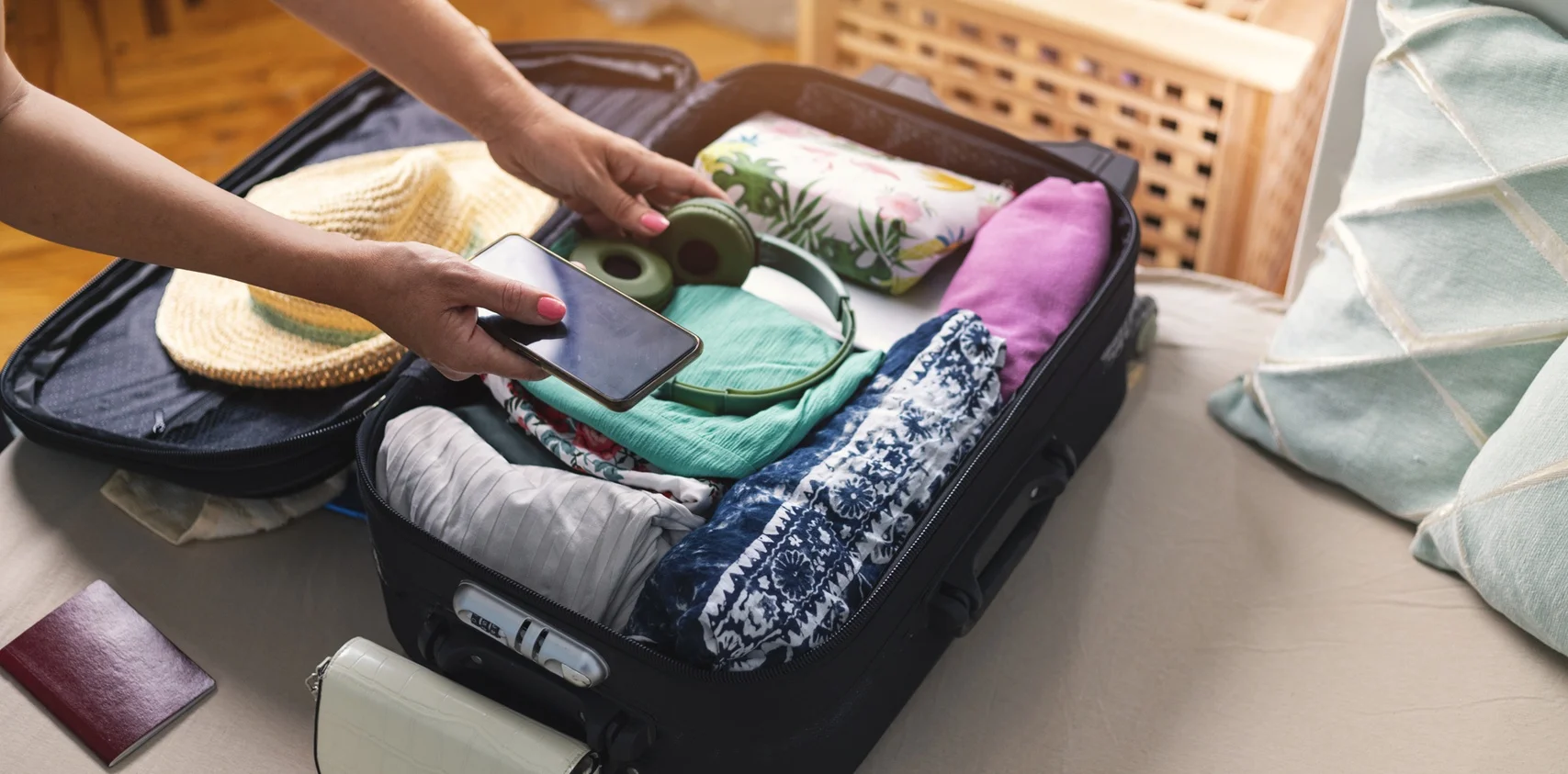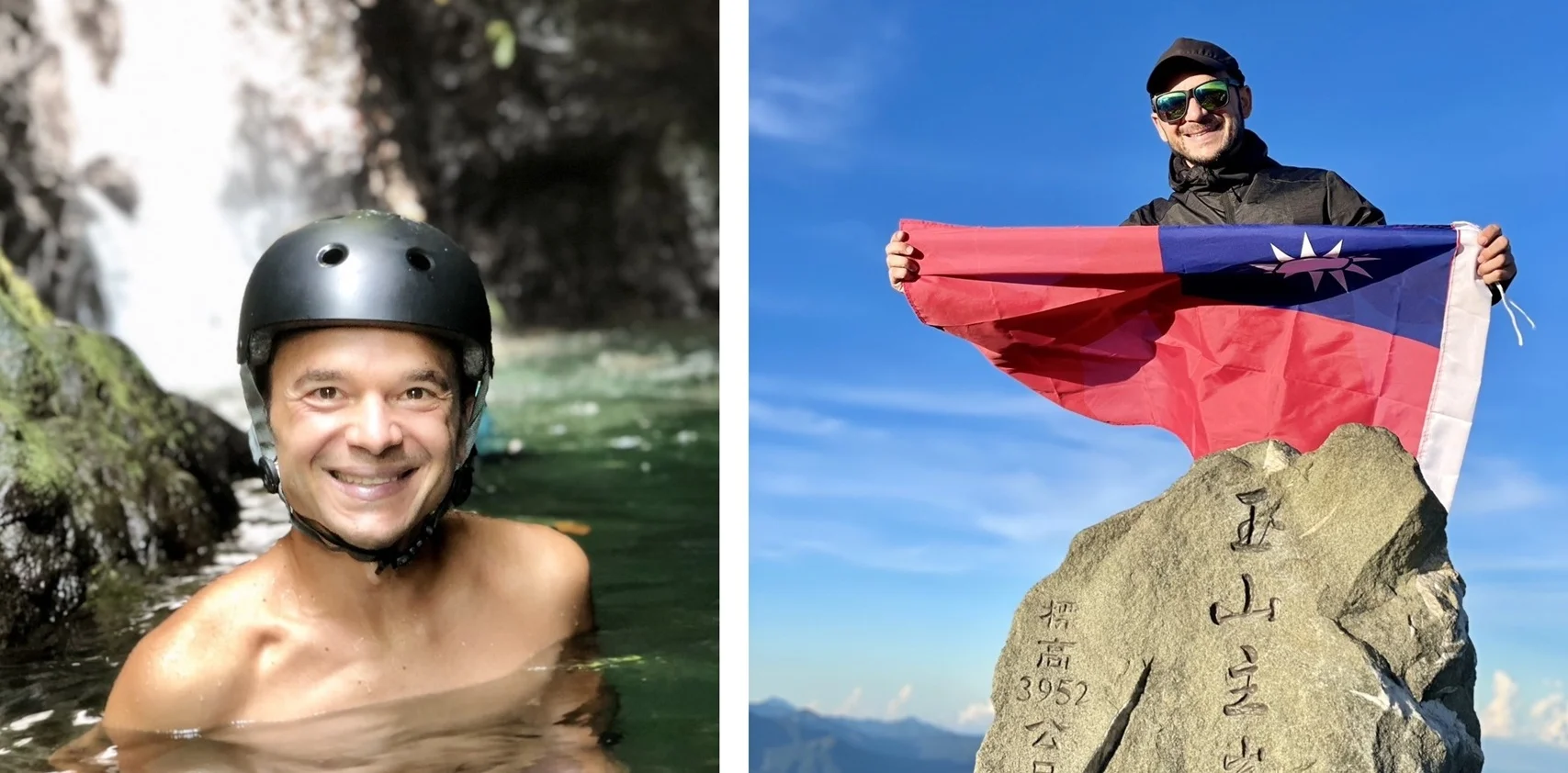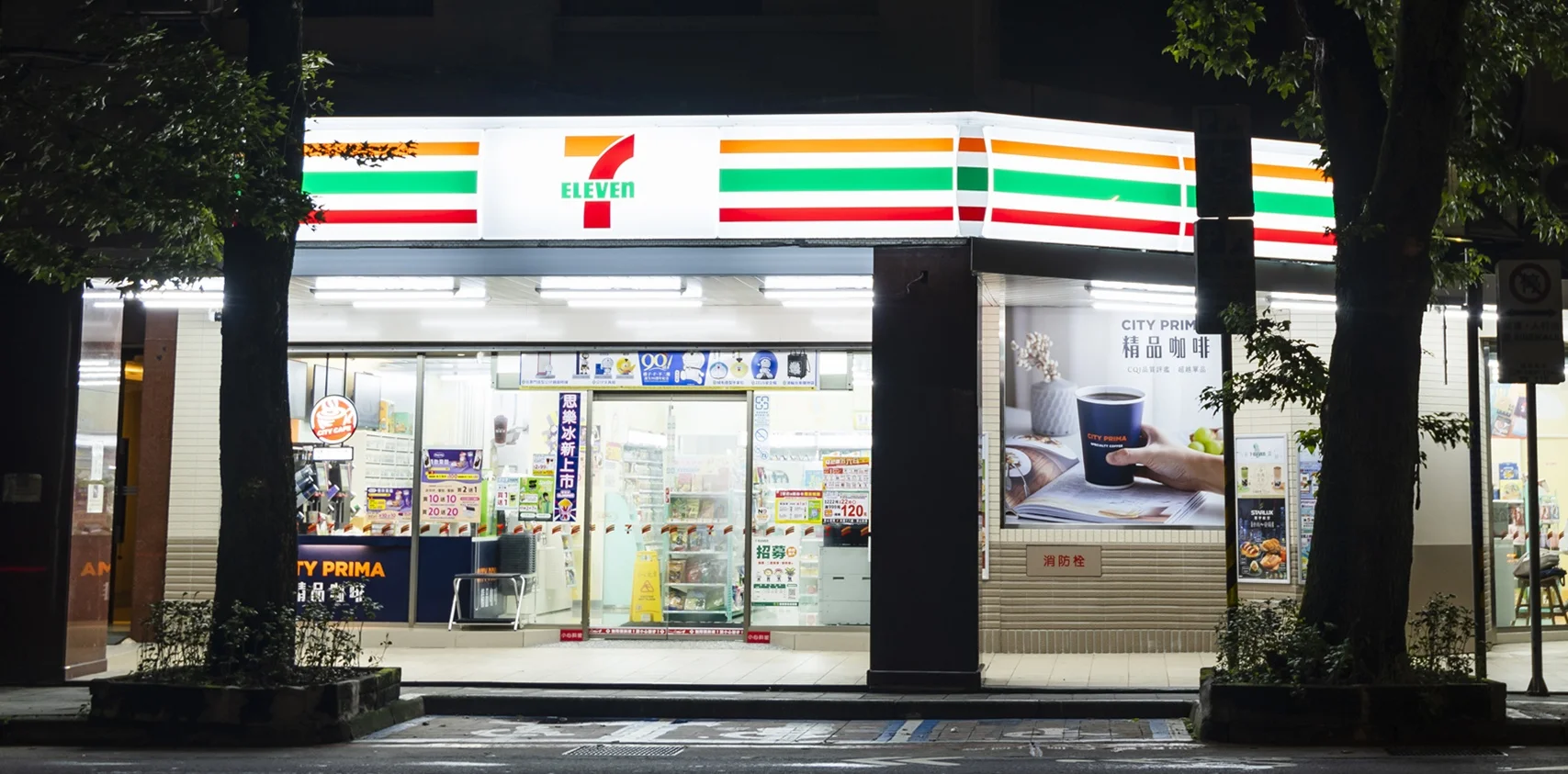All Posts
40 posts
Sort by Most Viewed

Athletic Trainer Pei-Chun Lin Exclusive Interview|2 Actions Boost Customer Growth! My Experience in “Selling Professional Services”
In sports events, we often see that when athletes get injured, someone conducts emergency checks and treatment for them; in the behind-the-scenes footage, you might also see athletes lying in the locker room, receiving massages and relaxation from someone. This person, often the “most familiar stranger” to sports fans, is the athletic trainer. Initially, they specifically served athletes, being responsible for ensuring appropriate training volume, handling sports injuries, and planning the method of returning to the original training mode after an injury. However, due to the increase in amateur sports enthusiasts in recent years, many Athletic Trainers have also changed their service targets, helping the general public manage sports injuries through courses. Even the long-term aches caused by poor posture may improve after taking their classes. However, like many jobs, such as doctors and consultants, this kind of business that doesn't sell physical goods but provides services based on professional abilities is particularly tricky in marketing. One reason is that material goods can be sold through proactive and large-scale promotions. Still, if overly promoted, professional services can quickly raise doubts, making people wonder, “Is the service quality could be better, which is why it's on discount?” Without relying on such promotions, how can professional services be sold? Pei-Chun Lin, co-founder of “Ninety Percent Athletic Train”, will share how he increased monthly teaching hours by seventy percent within three months, not only boosting revenue but also helping to expand the team subsequently! (Photo from Pei-Chun Lin) Everything Starts From Choosing a Specialized Sub-field Pei-Chun Lin was originally a wrestler, and during his training, he came into contact with the profession of “athletic trainer”. He was deeply attracted by its feature of dealing with injuries and connecting back to the pre-injury sports mode and decided to delve deeply into it. After obtaining his certification, he also began to provide one-on-one services. In the early stage of his practice, his business was relatively stable, relying on customer referrals and word-of-mouth recommendations from seniors. 'But honestly, I had no idea how to do marketing,' he said. It was not until later, when he participated in a course, that he began to understand the marketing of professional services. Based on the goal of 'being the one customers think of and trust to seek help from when they have a problem,' he took two actions to regroup and strengthen his efforts. “The first action I took after the course was to select a specific ‘sub-field’ to specialize in,” he said. Many people intuitively think that promoting multiple abilities will attract customers, but having too many miscellaneous abilities makes it unclear to customers when to seek help. Choosing a “specialized sub-field” in a vast professional area, that is, finding a type of problem that one can solve, coupled with the correct promotion, gives a better chance of coming to the minds of customers when they encounter specific issues. For Pei-Chun, although he is capable of solving many sports injuries, he eventually chose to focus on dealing with anterior cruciate ligament (ACL) injuries of the knee. Why choose to focus on this issue? He shared, “My initial consideration was that after the ACL is injured, there is a high proportion of cases requiring surgery, and after the surgery, a rehabilitation period of nine months to a year is still needed. This injury is obvious and has a significant impact on life.” Pei-Chun initiated his second action after choosing a “clearly demanded” sub-field. Accumulating "Trust Assets" to Shape a Reliable Impression There needs to be more than just setting up a sub-field to make customers think of us when they encounter a problem and feel secure in entrusting us with the solution. As mentioned earlier, this still requires the correct promotion. In the so-called correct promotion of professional services, one of the strategies is to accumulate “trust assets,” which means continuously producing content related to the problem we want to solve, such as observations or solutions to the problem, establishing a clear and reliable impression in the minds of customers. Compared to aggressive advertising, accumulating trust assets is more fundamental and practical for selling professional services. After all, most professional services are costly; customers always want to find someone they trust to provide the service rather than purchasing because of a random advertisement they saw. “So, I started managing an Instagram account, posting information related to 'knee injuries,' such as what actions are likely to cause anterior cruciate ligament injuries, and so on,” Pei-Chun said, showing the content of his account on his mobile phone. He also shared that he chose Instagram as a channel to share content because images convey the Before and After of a student's progress in class better than text. Therefore, considering what medium to use to share content should be determined based on the nature of the service. A month or two after managing Instagram, the most significant progress was not just more and more people coming to ask about knee injury issues! Pei-Chun excitedly said, “Most people who take the initiative to ask usually have a need. They trust me through the content, and, as long as there is no significant problem in the communication process and their doubts can be removed, the probability of them purchasing the course can be as high as eighty to ninety percent.” Through these two actions extending from the core of selling professional services, Pei-Chun's customer numbers and monthly teaching hours quickly grew within three months. Initially, teaching 80 to 100 hours per month was quite good, but later, the monthly teaching hours increased by seventy percent, reaching nearly 170 hours. In addition to earning more income, he helped team members by sharing experiences. In the past, only one person was teaching; now, three more partners are teaching, and they have even opened a store. How do we eliminate customer doubts during the communication process? Here are two suggestions: “Just now, an essential point was made, which is the communication with customers before the service!” Communication with customers before providing the service is crucial for two reasons: first, it helps to clear their doubts, making them more likely to purchase the service; second, a correct understanding of the service results will significantly affect their subsequent satisfaction. So, how should we communicate effectively with customers? Pei-Chun added two practices at the end of the interview. First, summarize the frequently asked questions by customers and clarify doubts beforehand. For the services provided by Pei-Chun, commonly asked questions include “What is the difference between you and physical therapists?” and “How are your exercise classes different from those at a gym?” etc. He prepared answers for these questions to explain clearly before the customer asked. From the customer's perspective, doubts might be resolved earlier, but they can also feel the professionalism and dedication of the service provider. Second, clarify the effectiveness of the service and establish correct expectations. To sell the service successfully, many people claim they can solve whatever problem the customer encounters. But this is risky because if the issue still needs to be resolved afterward, the customer will likely not repurchase or recommend it to friends and family. If we want to maintain a steady business later on, the only option would be to keep adopting the costliest method, which may only sometimes be the most effective: attracting new customers. The professional services available are diverse and varied. Only some who adopt these practices will see quick results within three months, like Pei-Chun, or find everything going smoothly afterward. Pei-Chun shared that, although the current operation is still going OK, he is also trying to overcome new challenges. These include how to make team collaboration more efficient and standardize products to save time customizing each one for clients. “However, we will continue to work hard, hoping to achieve our goal of having service locations in every city and county soon.” He also encourages professional service providers striving to find their footing to refer to the concepts and practices learned in his courses. By doing this while overcoming various challenges, they can at least ensure they are putting effort into the right direction rather than being stuck in common marketing misconceptions! -- (This article is translated by the Digital Nomad editor group.) Follow the Digital Nomad Facebook fan page and stay updated with more recent articles on Instagram (@digital.nomad.press)!
January 10, 2024

Digital Nomad Pre-Departure Checklist: The Simple Packing Guide
1. Packing Principles : Nomadic Life ≠ Backpacking Trip A digital nomad’s luggage must support both work and daily life. So before packing, remember these three key principles: Lightweight but not careless: You’re not on vacation—you’ll be working remotely for an extended period. Multi-functionality is key: Every item you bring should ideally serve two or more purposes. Backup and flexibility: In case of internet outages, locked cards, or lost items—you need a Plan B. 2. Digital Nomad Gear Checklist (Global Essentials) 1. Remote Work Kit 2. Minimalist Living Kit 3. Safety & Emergency Kit 4. Optional but Helpful Add-ons 3. Commonly Overlooked Essentials These items may seem minor, but many digital nomads regret not bringing them once they’re on the road: Power strip (with USB ports): Many places only offer one outlet—use a strip to charge laptop, phone, and earbuds all at once. Earplugs and sleep mask: In hostels, airplanes, or noisy neighborhoods, good sleep is gold. Backups of passport and key documents: Scan and upload to Google Drive; print a set and hide it deep in your bag. Multiple credit/debit cards: If one gets locked, you’ll have a backup. Understand how insurance claims work: Don’t just buy insurance—know what documents are required and prepare templates in advance. Prescription meds or personal health items: Your go-to brands or specific ingredients might not be available abroad. Feel free to share with us—what are your must-have essentials for digital nomad life? -- Follow the Digital Nomad Facebook fan page and stay updated with more recent articles on Instagram (@digital.nomad.press)!
April 16, 2025

Foreign Digital Nomads in Taiwan! Living Pros & Cons, Housing, Social Life , and More| Freelance Software Engineer Cédric Lignier Exclusive Interview
In 2018, Cédric reached his tenth year as a software engineer, working in Silicon Valley, USA. This was also the year he left his job and, along with his wife who also works in IT, embarked on a journey as digital nomads. "At first,we planned to take a year off to travel and then come back to work. But after some research, we found that maybe we can try to travel for over one year," Cédric explains. His wife, who initially kept a full-time job while working remotely, later decided to follow his example. Inspired by his flexible lifestyle and income mostly from investing, she also quit her job and started her new life. Their journey began from Montreal, Canada (since his wife still needed to handle U.S. work matters and couldn’t leave the Americas due to time zones), and led them through Mexico, Spain, Portugal, France, and finally Asia, where they explored Thailand, Vietnam, and Bali, Indonesia. In 2020, when the pandemic disrupted their travel plans, they decided to change their original plan of visiting Japan and came to Taiwan. (Photo from Cédric) Settling in Taiwan: Embracing Diverse Outdoor Activities and the Convenience of Taipei’s MRT Cédric shares that he and his wife initially came to Taiwan by chance, given Taiwan’s highly acclaimed pandemic response at the time. So why did they choose to stay, obtain Taiwan Employment Gold Card for permanent residency, and continue to consider Taiwan a “second home,” even as international travel has become easier? The reasons primarily include: 1. Natural Environment and Variety of Outdoor Activities Compared to large urban centers, Cédric and his wife prefer peaceful, natural surroundings. During their time in Taiwan, they explored many locations, perhaps even more than some locals, including Alishan, Kenting, Taitung, Green Island, Penghu, and Xiaoliuqiu. Cédric is especially drawn to Taiwan’s landscapes and cultural richness. He has also enjoyed outdoor activities, such as river tracing, climbing Yushan, and cycling from Hualien to Taitung. The ability to easily access various natural settings is one of the most attractive aspects of living in Taiwan for him. (Photo from Cédric) 2. Safety After spending time in North and South America and Europe, Cédric found the safety in Asia, especially Taiwan, remarkably reassuring. “By safety I mean people don’t have to worry if they misplace an item. For example,I left my GoPro on a YouBike in Kaohsiung, only realizing it was missing once I was on the train back to Taipei. Fortunately, when I contacted lost and found, they told me someone had already turned it in. On our next visit to Kaohsiung, I was able to retrieve it,” he explains. In France, however, it’s easy to lose items to pickpockets, even if you keep them with you. He also mentions that in some areas of the U.S., people are mindful of firearm-related safety; while traveling in Mexico, they had to stay vigilant due to the common risk of carjacking by gangs. Aside from these points, Cédric also praises the signage and cleanliness of Taipei’s public transportation. Compared to Thailand or Vietnam, he finds Taipei’s MRT more easier to understand for foreigners, allowing his parents,who even don’t speak English,navigate the city with ease by following the color coded line and stop numbers. Additionally, the cleanliness of the MRT and buses far surpasses that of the U.S. and France. Inconveniences: Banking and Language Barriers in Smaller Cities Of course, living in a foreign culture with a different language isn’t without challenges. For example, Cédric points out that, in Taiwan, many banking matters still require in-person visits, whereas most banking services abroad can be handled online. Opening a bank account in Taiwan requires an online reservation, followed by nearly two to three hours at the bank to complete all the procedures. If you need to update information, the entire process has to be repeated. “That is painful. We used to do everything online in California or in the US or even in Europe,” he remarks. While English works well in Taipei, other cities can pose challenges if one doesn’t speak Mandarin. When faced with language barriers, he often relies on gestures and Google Translate. He admits that although he has learned a bit of Mandarin, the convenience of using English in Taipei has kept him from fully committing to learning. His most-used Mandarin phrase? In his accent, he replies in Chinese:bubble tea, less ice, no sugar. (Photo from Cédric) Travel-Friendly Short-Term Rentals and Building Friendships Through Shared Interests After weighing the conveniences and inconveniences, Cédric is still enamored with Taiwan. Not only did he settle down, but he also became involved with Crossroads, a non-profit organization working with the Taitung County Government to promote the digital nomad platform TTnomads. Through various cultural activities, they attract digital nomads worldwide to explore Taiwan. As an experienced expat in Taiwan, he also shares some practical tips for newcomers. [Housing] Cédric suggests evaluating one’s own needs when choosing accommodations. For him and his wife, a kitchen is essential since they enjoy cooking. They prefer flexible short-term rentals to explore different cities without the constraints of a one-year lease, typically finding housing on Airbnb and staying at least a month in each location. For shorter trips, they generally use Booking.com. [Mobile Plans] Since they only use their phones when needed (such as for maps), they opted for prepaid SIM cards with around 2GB of data rather than pricier unlimited plans.“They are easy to get and can get reloaded at 7-11 very easily as well,”he added. [Transportation Card] A must-have for life in Taipei is an EasyCard, which Cédric uses to ride the MRT and often to rent Ubike. Speaking of the EasyCard, he laughs, “I thought it’d be a plain card, but there are all kinds of designs to choose from in Taiwan.” If you plan to explore Taipei and its surroundings extensively by using public transportation, you can also buy a T-pass.For just 1,200 NTD per month, you can enjoy unlimited rides on the metro and buses. (Photo from Cédric) [Making Friends] In a new place, how does one make friends? Cédric shares that he and his wife started by using Meetup, where people organize various events. They joined hiking groups, allowing them to meet like-minded friends for regular outings. Later, they also connected with others through the events holding by Taiwan Employment Gold Card Office. Cédric explores aboriginal culture in Taitung. (Photo from Cédric) Having lived in Taiwan for several years, they now look forward to traveling more internationally. After a recent trip to South Korea and now visiting family in California, Cédric and his wife plan to spend one month each year in the U.S. and France with family, while returning to Taipei for two to three months every spring and traveling to other countries during the remaining months. “I think Taiwan is a beautiful place which is underrated,and it has so much potential.” Cédric exclaims. He notes that many people are unaware of Taiwan, or know it mainly due to political issues with China, rather than its beauty. He’s keen to share Taiwan’s charms on his website, Nomad Numbers, and looks forward to returning after their U.S. and France visits! -- Follow the Digital Nomad Facebook fan page and stay updated with more recent articles on Instagram (@digital.nomad.press)!
February 26, 2025

Why Taiwan’s 7-Eleven Is the Nomad’s Best Friend?
When you think of a convenience store, you probably imagine a place where you grab a bottle of water, maybe a bag of chips, and rush out in under two minutes. But in Taiwan, the experience is completely different. As a digital nomad living here, I can say this with full confidence: 7-Eleven is more than a convenience store—it’s a life hub. Whether you're working remotely, navigating local bureaucracy, or just trying to survive your first typhoon season, 7-Eleven becomes your reliable, all-purpose sidekick. Here’s why every nomad in Taiwan should get to know their neighborhood 7-Eleven (and maybe even become emotionally attached to it). 🧑💻 1. Your Backup Coworking Space Sometimes the coworking space is full, or your Airbnb Wi-Fi goes out right before a Zoom call. No problem—just walk into a nearby 7-Eleven. Many stores have indoor seating, power outlets, and reliable air conditioning. Some even offer free Wi-Fi (especially in urban areas). It's not unusual to see students, freelancers, and office workers typing away in the corner, iced latte in hand. And that latte? Made fresh by a machine that delivers surprisingly decent espresso. Add an egg salad sandwich and you're ready for a productive morning. 🍱 2. Meals, Snacks & Midnight Survival Kits Need a quick lunch between calls? 7-Eleven has you covered with hot bentos (lunchboxes), rice balls, dumplings, pasta, and even vegan options. The food is affordable, filling, and rotates seasonally—yes, there’s a pumpkin-flavored croquette in fall and sweet potato desserts in winter. Late-night hunger pangs? No problem. Most stores are open 24/7, and yes, the staff will microwave your meal, give you utensils, and smile while doing it. 🖨️ 3. Print, Scan, Fax—All Without a Printer One of the biggest struggles for nomads is accessing printing and scanning services. In Taiwan, just walk to 7-Eleven and use the ibon machine. You can: Print documents from your USB or cloud Scan and email files Make photocopies or fax something if needed Even print passport photos or buy resume templates! The interface is available in English, and the process is fast and shockingly cheap. 📦 4. Your Personal Mailroom Online shopping is huge in Taiwan, and 7-Eleven plays a central role in the logistics system. You can: Pick up packages from Shopee, PChome, or other platforms Send local or international parcels Even rent lockers in some branches to receive deliveries while you're out exploring Taroko Gorge No apartment mailbox? No problem. 💡 5. A Swiss Army Knife of Life Services This is where 7-Eleven goes full superpower mode: Pay your rent, electric bill, or even traffic fines Recharge your SIM card, MRT card, or game credits Book train tickets, concerts, or theme parks Use the ATM to withdraw money (many support international cards) Buy tickets for exhibitions, shows, or even a spa reservation All of this is done at the kiosk or counter, often with staff willing to help if you get confused (they’re used to expats and tourists!). 💬 6. The Cultural Warmth You Didn’t Expect Beyond the services, 7-Eleven is a microcosm of Taiwanese hospitality. Store clerks greet you with a “歡迎光臨” (huān yíng guāng lín — welcome) every time. Some will remember your face or your coffee order. You might find yourself chatting with a fellow nomad while waiting for the microwave to finish. It’s the place you go when everything else is closed, when you're slightly lost, or when you just need a quiet corner to collect yourself. It becomes part of your daily rhythm. 🧳 Conclusion: A True Friend on the Road For digital nomads in Taiwan, 7-Eleven isn’t just a convenience—it’s a daily lifeline. It meets practical needs, yes, but also offers a subtle form of companionship in a foreign land. It's your office, your kitchen, your mailbox, your translator, and your guide—all wrapped in one neon-lit, air-conditioned corner of comfort. So next time you're in Taiwan, don't just pass by a 7-Eleven. Step inside, grab a hot latte, and get stuff done. You’ll walk out wondering how you ever lived without it. -- Follow the Digital Nomad Facebook fan page and stay updated with more recent articles on Instagram (@digital.nomad.press)!
June 10, 2025
